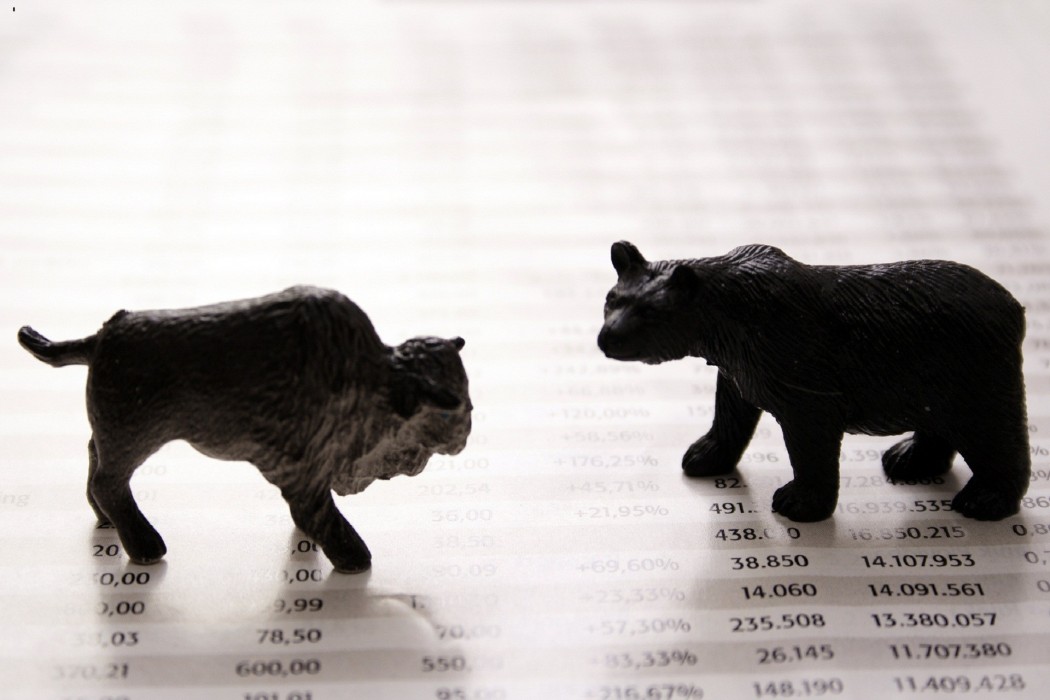WHY NOW REPRESENTS THE BEST TIME EVER TO INVEST IN PROPERTY By Ian Samuels, founder of The Property Investor and author of Property Tycoon: A Simple Seven-step Guide to Becoming a Property Millionaire Everyone knows that investing is the right path for those who want to grow their wealth. What many don’t appreciate, however, is that residential property represents the best form of long-term investment for those looking to increase their assets and set themselves up for early retirement. Better still, it is a much safer form of investment than stocks and shares. With all the bad publicity surrounding banks and investments, people simply don’t know where to invest anymore, but history teaches us that property values stand the test of time, having increased in value by an average eight to nine per cent every year for the last 60 years. It’s therefore fair to say that the old adage, “Safe as houses” aptly applies to property investment — whether you’re looking to dip into buy-to-let or find bargains that can be renovated and flipped back onto the market for a quick profit, wish to build up a substantial property portfolio, or simply want to minimize risk. GOLDEN AGE OF PROPERTY INVESTMENT Britain is now, thankfully, “post-recession”, and the UK property market is currently enjoying a golden age. Given this, 2014 – 2015 represents a great opportunity for those thinking of investing in the residential property market. In fact, now is a critical time to get on the property investment ladder as prices will never be this low again. Property prices started rising last year and will continue to do so over the next seven to eight years. The Property Cycle has entered the next phase, and history tells us that the property market will experience slow and steady growth over the next four to five years, before the next ‘Boom’ phase of the cycle, beginning around 2018 – 2019. That being said, the extraordinary recent rise in London property prices, caused mainly by a huge surge in demand by wealthy Europeans and Middle Eastern investors, does distort the figures somewhat. A good rule of thumb for property investors is to always treat the capital as a special case, isolated from the rest of the UK. Taking a 14% hike in London property prices in 2013 out of the overall UK figures, a more realistic increase of 4% – 5% was recorded by the Nationwide and The Halifax (overall UK increase including London 7.5%). Since The Nationwide started recording house prices in the 1950s, the property cycle has nearly always followed the same pattern, rising for eight–10 years followed by a slump or stagnation, followed again by a slow and steady period of growth before entering the next boom phase. London property prices are now showing signs of cooling and a ‘natural correction’ will inevitably occur. Those same wealthy foreign investors are now looking outside of London for better returns, mainly in the north and the Midlands for higher yields. This in turn will bring about a continued increase in prices around the UK while London prices stagnate, bringing equilibrium to the overall market. BUY-TO-LET With rental yields still on the increase and first time buyers unable to find 20% – 25% deposits, the rental market continues to thrive and grow, offering excellent returns for those with buy-to-let property portfolios. A steady increase of foreign students and eastern European immigrants in the UK throughout recent years has helped to create a massive surge in demand for rental properties. With more single people looking to rent and a huge backlog of young professionals unable to get on the property ladder, its no wonder rental yields continue to increase. The recent introduction of MMR (Mortgage Market Review) and new tougher lending rules brought in by The Bank of England, in order to try and stem the increase in property prices, has resulted in a sharp decline in the number of mortgages approved by banks and building societies, creating even more demand for people looking to rent. The government can introduce new help-to-buy schemes for first-time buyers and try to stem the increase in property prices by introducing MMR (“Mortgage Market Review”). But whatever the Bank of England decides to do to solve Britain’s long-term housing problem, the only real solution to the housing crisis is to build hundreds of thousands of new homes, and that isn’t going to happen any time soon. CONCLUSION When I first became interest in property, back in the early 1990s, I started out without a plan, without money and without experience of property investment. Now, I have a portfolio worth millions of pounds. I mention this not to boast, but to show that becoming a property tycoon is certainly achievable in the long-term, if you understand your market and know how to take advantage of opportunities when they arise. With a lack of supply of new homes, and the surge in the number of people looking to rent, combined with where we are on the Property Cycle right now, the bottom line is that there has never been a better time to invest in residential property — especially in the areas outside London. Property Tycoon: A Simple Seven-step Guide to Becoming a Property Millionaire by Ian Samuels (Harriman House) is available now, priced £12.99 (paperback) and £10.79 (ebook). IAN SAMUELS’ TOP 10 TIPS FOR BECOMING A PROPERTY TYCOON
- Set yourself short, medium and long term goals and create a plan
- Do lots of research before deciding what area you want to start investing in, make sure its a good area for rentals and capital gain
- Know your finances, and have a basic understanding of how it works. Learn about leverage, equity, mortgages, tax, capital gain & cash-flow, yields and return on investment
- Get yourself a mentor, someone who’s already been there and made a success of property investment
- Build your team. Make friends with builders, electricians, plumbers, decorators, estate agents, letting agents, and find a good mortgage broker
- Learn about the Property Cycle and know where you are on this cycle
- Always put down at least 10 per cent – 20 per cent deposit to give yourself a cushion and to allow for any drop in house prices
- When purchasing any property make sure the figures stack up and that it will provide a positive cash-flow
- Let the agent manage the first one or two properties for you until you know what’s involved in managing and maintaining rental properties.
- Remember that property prices can go down as well as up and that to make a healthy profit from property investment you must be in it for the long term
The Property Cycle – Where are we now? The property cycle in the last sixty – seventy years has almost always followed the same eight – ten year cycle, between three – four years of stagnation or small % drop in value, followed by three – four years of slow and steady growth and then another two – three years of big growth, sometimes reaching 20% – 30% in one year. The advantage of this regular cycle is that property investors can fairly accurately predict a few years ahead and prepare their finances for a boom or bust period. We have had more than three – four years of stagnation and drop in property prices, and I believe we are about to enter a period of slow but steady growth lasting about four years. This is the time to invest in property before we encounter the next stage of the cycle. In 1988 house prices rose 23% followed by another increase of 20% in 1989. There followed four or five years of stagnation and drop in prices followed by another five or six years of slow but steady growth averaging 5% – 6%. Then the huge increases came again in 2002, with a whopping 17% increase in house prices followed by 22% in 2003 and 18% in 2004. What happened then in 2005 was slightly unusual in that house prices continued to rise instead of falling, as they had during previous similar stages of boom and bust cycles. According to the regular property cycle this shouldn’t have happened, however due to the crazy bank lending situation and the ensuing madness which followed, where the nation was encouraged to borrow to keep spending, in order to keep the economy ticking along, a big bubble naturally formed. Between 2005-2007 prices rose steadily when normally they would have fallen, creating the property bubble which in turn caused the big bust beginning in 2007. So the drop in prices this time round has been bigger than usual and lasted longer than usual, however all that means is that once the market picks up again we will experience even bigger increases. So where are we now on the property cycle? Looking at the house price data below showing how house prices rose and fell between 1984 – 2013 into account, you can clearly see we have now entered a new period of slow but steady growth. UK House Price Date 1984 – 2013
| Year | Index | % + or – |
| 100.0 | . | |
| 1984 | 107.2 | 7.2 |
| 1985 | 117.0 | 9.1 |
| 1986 | 129.9 | 11.0 |
| 1987 | 149.9 | 15.4 |
| 1988 | 184.8 | 23.3 |
| 1989 | 223.1 | 20.8 |
| 1990 | 223.2 | 0.0 |
| 1991 | 220.5 | -1.2 |
| 1992 | 208.1 | -5.6 |
| 1993 | 202.1 | -2.9 |
| 1994 | 203.1 | 0.5 |
| 1995 | 199.6 | -1.7 |
| 1996 | 208.6 | 4.5 |
| 1997 | 221.7 | 6.3 |
| 1998 | 233.7 | 5.4 |
| 1999 | 250.5 | 7.2 |
| 2000 | 275.1 | 9.8 |
| 2001 | 298.6 | 8.5 |
| 2002 | 350.6 | 17.4 |
| 2003 | 429.1 | 22.4 |
| 2004 | 507.6 | 18.3 |
| 2005 | 536.6 | 5.7 |
| 2006 | 581.3 | 8.3 |
| 2007 | 635.9 | 9.4 |
| 2008 | 585.9 | -7.9 |
| 2009 | 524.6 | -7.5 |
| 2010 | 539.6 | 2.9 |
| 2011 | 525.4 | -2.6 |
| 2012 | 522.1 | -0.6 |
| 2013 | 561.2 | 7.5 |


